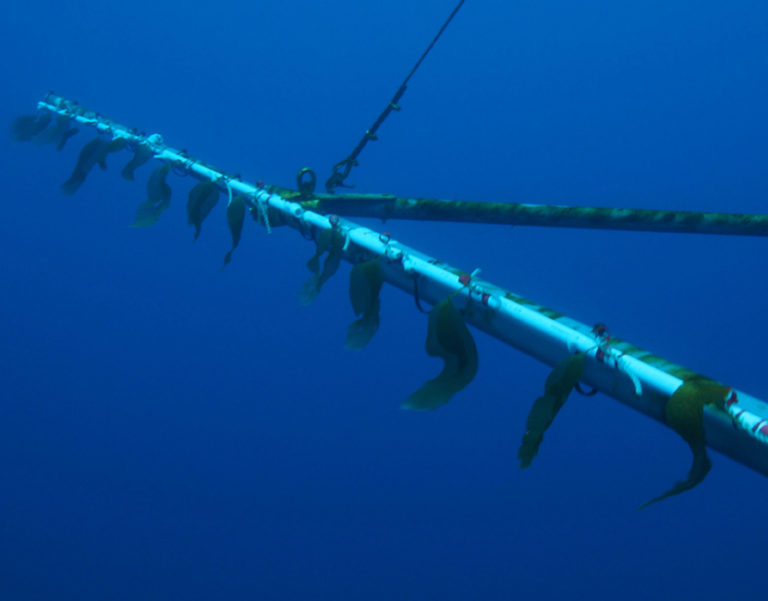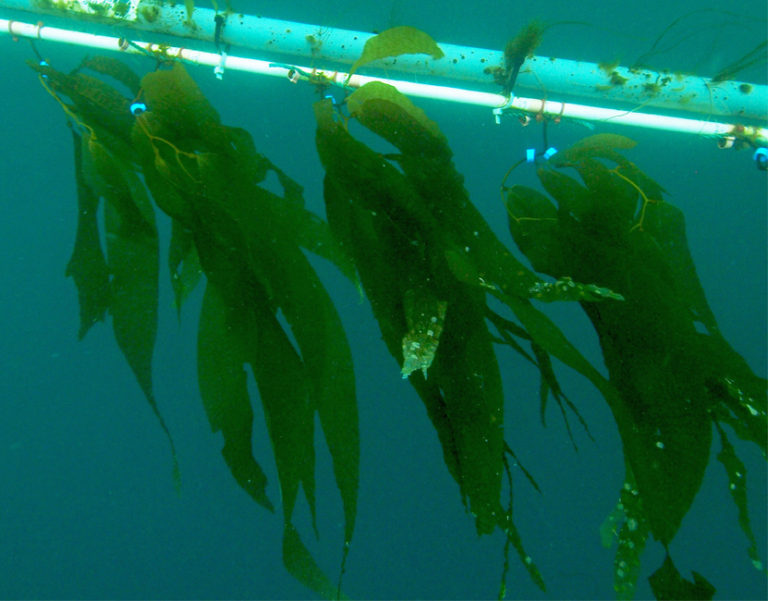The key test: does a fast-growing kelp thrive when depth-cycled at night to absorb nutrients and surfaced during the day to absorb sunlight? The target species is giant kelp (Macrocystis pyrifera).
After 104 days, the depth-cycled kelp grew at 5% per day, compared to the control kelp at 3.5% per day.1
The kelp were submerged each night below the local thermocline to 80 meters depth (272 feet), and then surfaced each day to absorb sunlight. The Marine Biology team collected juveniles with the first blade (leaf) but the first pneumatocysts had not formed (floatation bulb used by the kelp to float the plant upward to the surface and the sunlight). The Biologists collected enough juveniles for both the depth-cycling test and a matched control line. All juveniles were surfaced, weighed and measured and then deployed to either the test or control system.
Marine Biologists monitored the kelps and the water nutrients regularly. At the end of this test, the biomass was weighed and compared to biomass from the control group.
KELP GROWTH TEST RESULTS
Preliminary results are encouraging – the depth-cycled kelp grew as well or better than the control kelp in the natural kelp bed.


Marine Biologist measuring growth of depth-cycled kelp eight weeks from outplanting.
Video credit: Maurice Roper
This experiment showed that the kelp did in fact absorb deep water nutrients and that farms towed by drone submarines can grow abundant kelp.
For this effort, Marine BioEnergy is collaborating with research teams at the University of Southern California (USC), Wrigley Institute for Environmental Studies and for continuing research with the USC AltaSea Algal Laboratory.
This effort is funded by the U.S. Department of Energy, Advanced Research Projects Agency – Energy (ARPA-E). Marine BioEnergy is pleased to be part of the ARPA-E MARINER Program. MARINER is funding innovative projects to develop tools to enable the United States to become a global leader in the production of marine biomass. (MARINER: Macroalgae Research Inspiring Novel Energy Resources)
As part of this effort, USC has developed a kelp nursery to grow sporelings on artificial substrate (long lines). The nursery long lines will be subjected to depth-cycling and are part of the preparation for commercial deployment.
For more on USC, Wrigley Marine Science Center on Catalina Island:
http://dornsife.usc.edu/wrigley/
For more on the U.S. Dept of Energy, ARPA-E, MARINER Program:
https://arpa-e.energy.gov/?q=arpa-e-programs/mariner
